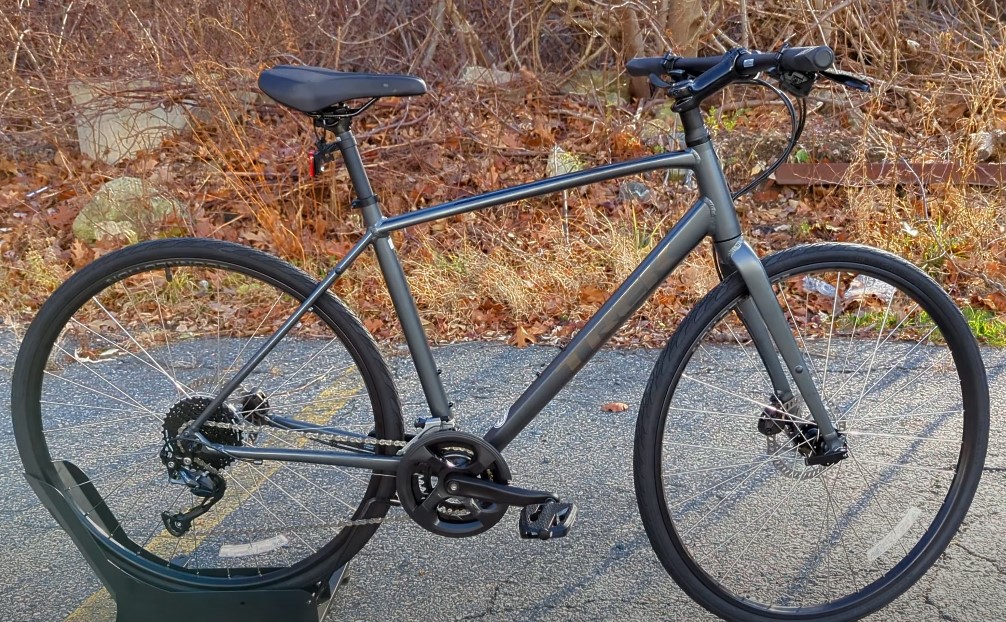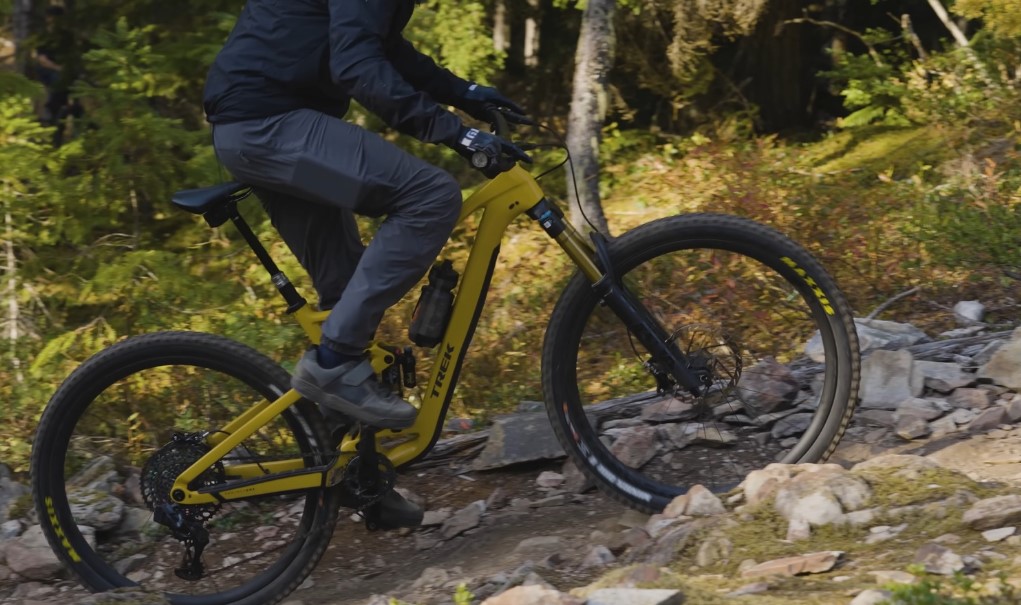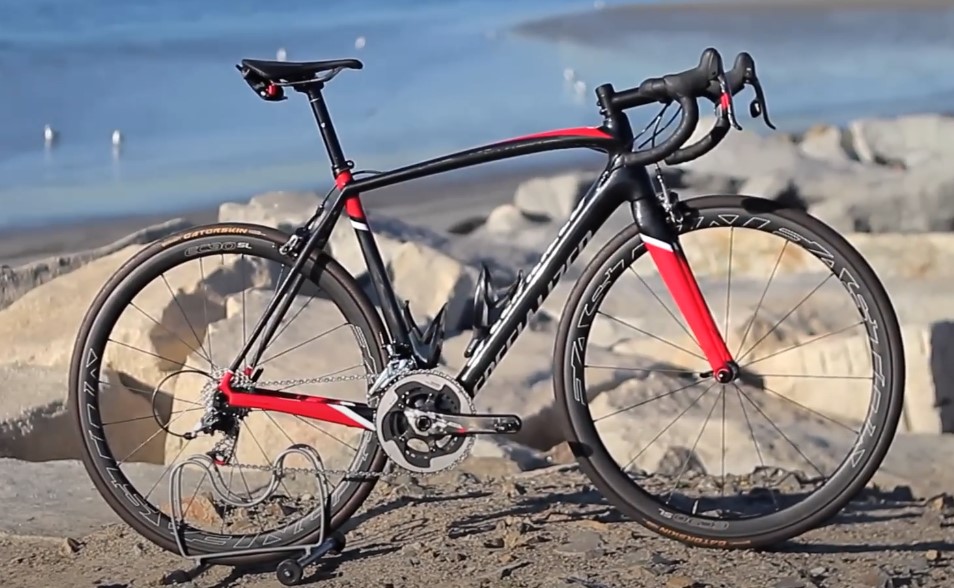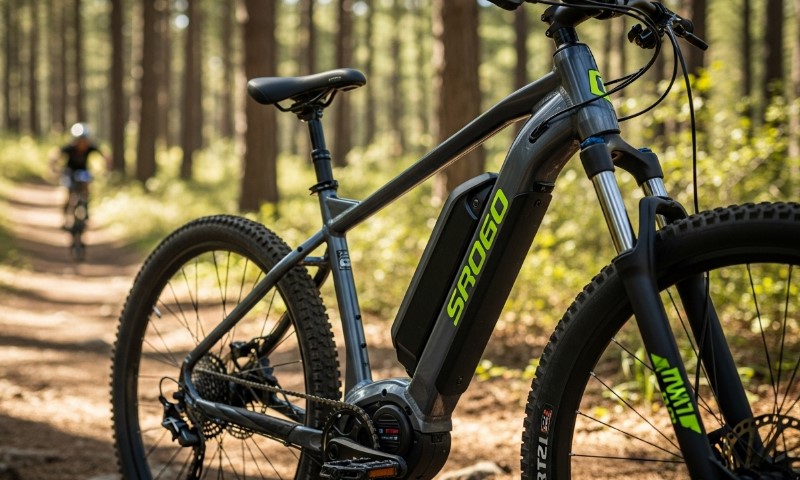When we talk premium bicycles, Trek and Specialized are two of the most recognized brands in the cycling world. Both offer a wide range of models suited for road biking, mountain biking, and hybrid uses, but they differ in several key areas.
Knowing these differences can help riders make informed decisions about which brand best suits their needs.
One major difference lies in the technology and frame design each brand prioritizes. Trek, for example, is known for its advanced suspension systems like the IsoSpeed decoupler, which enhances comfort and smoothness on rough terrain.
Specialized, on the other hand, has a reputation for innovation in aerodynamics and its Body Geometry Fit, designed to improve rider ergonomics and reduce fatigue.
These distinctions show just how each company approaches performance and comfort, catering to slightly different rider preferences and goals.
There are many other differences between these two, and we are going to cover them today. Let’s get right into it.
Table of Contents
ToggleA Quick Look at the Brands

Trek and Specialized have been around for decades—Trek started in 1976, and Specialized got its start a bit earlier, in 1974. They’ve grown to become industry leaders, with huge fan bases in both the mountain and road biking communities.
Each company has carved out its own space in the market, catering to slightly different riders.
Trek is known for innovation, particularly in bike durability and versatility, while Specialized focuses on precision engineering and high performance.
1. Mountain Bikes & Why Suspension Systems Matter
One of the key differences between Trek and Specialized mountain bikes lies in how they approach suspension.
Trek’s Active Braking Pivot (ABP)
Trek uses an Active Braking Pivot (ABP) system in its full-suspension bikes, which is designed to reduce wheel chatter during braking.
This makes a huge difference when you’re on a technical descent, giving you a smoother ride and more control. Trek also has the Full Floater system, which enhances pedaling efficiency by limiting excess movement in the shock mount while pedaling.
Specialized’s Future Shock Suspension
On the other hand, Specialized opts for its own proprietary Future Shock system. This system is focused on rider comfort, reducing fatigue by absorbing the vibration from rough trails.
It’s perfect if your goal is to feel less beaten up after hours of riding on technical terrain.
2. Mountain Bike Models – Trek Fuel EX vs. Specialized Stumpjumper

When talking about iconic models, we have to compare two legendary bikes: Trek’s Fuel EX and Specialized’s Stumpjumper.
- Fuel EX: Versatility is the name of the game for the Fuel EX. It handles everything from steep climbs to technical descents, and it offers different levels of suspension travel, which means you can customize the ride based on the terrain.
- Stumpjumper: The Specialized Stumpjumper is one of the most popular trail bikes in the world, known for being lightweight and nimble. One feature that sets it apart is the internal storage compartment in the frame, which is great for stashing essentials like tools or snacks during a long ride.
3. Road Bikes – Aero vs. Comfort
Switching gears to road bikes, Trek and Specialized bring very different things to the table.
Trek Madone and Domane
Trek’s road bike lineup includes the Madone, a speed-focused aero bike, and the Domane, which is designed for endurance. The Madone uses Kammtail Virtual Foil (KVF) technology to reduce drag and boost speed on flat terrain, making it ideal for riders who prioritize aerodynamics.
On the flip side, the Domane’s IsoSpeed decoupler absorbs road vibrations, making it perfect for long, comfortable rides on rough roads.
Specialized Tarmac and Roubaix

Specialized also offers top-tier road bikes like the Tarmac and Roubaix. The Tarmac SL7 is a racer’s dream, combining lightweight construction with aerodynamic efficiency.
If you’re aiming for podium finishes, the Tarmac might be the bike for you. The Roubaix is built with the Future Shock system, making it a solid choice for long-distance riders who want to prioritize comfort on rougher roads.
4. Frame Materials
When we talk build materials, both Trek and Specialized offer bikes made from high-quality carbon fiber and aluminum. But they approach materials a little differently.
- Trek’s OCLV Carbon Fiber: Trek uses OCLV carbon fiber technology, which is incredibly strong yet lightweight. This material is found across their road and high-end mountain bikes, offering a perfect balance between weight and durability.
- Specialized’s Focus on Lightweight Design: Specialized is known for pushing the limits of lightweight construction, especially in their S-Works line. They use a combination of carbon and aluminum to create bikes that are designed to perform at the highest levels, often with a greater emphasis on weight reduction than Trek.
5. Customization Options

One thing that sets Trek apart is its Project One customization program. With Project One, you can tailor your bike exactly to your specifications, from paint jobs to individual components.
This gives you an opportunity to build a bike from scratch so that it can suit your preferences perfectly.
Specialized, while offering plenty of high-performance models (especially through the S-Works line), doesn’t offer the same level of customization that Trek does.
6. Components and Value for Money
Both Trek and Specialized use components from big names like SRAM and Shimano. However, at similar price points, Specialized bikes often have slightly better components than Trek’s, particularly at the entry level.
You might notice that Specialized offers more advanced parts for the same price, which gives them an edge in terms of value for money in that category.
That said, Trek bikes shine in their mid-range and high-end models, where you’ll find that their component choices are on par with Specialized.
7. Riding Experience (Stability vs. Performance)
@havardroisland2 Few clips from Spain⚡️🫵🏼 @Trek Bikes #trek #foryou #foryoupage #viral #mtbforyou #spain ♬ original sound – cesza
When you get down to how the bikes actually feel to ride, there’s a noticeable difference.
- Trek’s Ride: Trek bikes are typically described as stable and smooth. Their designs prioritize balance, making them great all-around bikes for riders who want versatility across different terrains. Whether you’re cruising on roads or tackling tough trails, you’ll get a dependable ride that feels solid.
- Specialized’s Ride: Specialized bikes, on the other hand, are known for being more performance-driven. They’re often a bit more aggressive in terms of handling and are highly responsive, which makes them a popular choice for racers or competitive cyclists who need sharp, precise control.
8. Price Points and Resale Value
Both brands sit at the premium end of the market, but Specialized tends to be priced slightly higher than Trek. Their top-tier models, especially in the S-Works line, are designed for peak performance and come with a premium price tag.
Trek, while still expensive, offers more price points for entry-level and mid-range buyers, making them a bit more accessible to those just starting out or those who aren’t looking to break the bank.
When it comes to resale value, both brands hold their worth well. However, Trek’s reputation for durability gives it a slight edge, as their bikes often perform well over the long term.
Specialized bikes, with their focus on cutting-edge tech, might appeal more to those looking for the latest in performance features but may not be as robust for long-term use.
My Trek Bike Pick – Trek Fuel EX 9.8 XT
The Trek Fuel EX 9.8 XT is a beast of a trail bike, and I love it for its versatility and toughness. With 140mm of travel on the rear and 150mm upfront, it’s built to handle pretty much anything the trail throws at you.
This bike is perfect for those who want both downhill fun and uphill efficiency. It’s fitted with top-tier components, like RockShox Lyrik suspension, Bontrager carbon wheels, and a Shimano XT drivetrain, which keeps it nimble and responsive.
Plus, Trek’s OCLV Mountain Carbon frame keeps the weight manageable for a full-suspension bike at this level.
Price: Around $10,999 USD
- Impressive suspension and handling for varied terrain
- Lightweight carbon frame with excellent build quality
- Great uphill pedaling efficiency
- Expensive, so it is less accessible for casual riders
- Slightly heavier compared to other high-end trail bikes
My Specialized Bike Pick – Specialized Tarmac SL7

For road cyclists, the Specialized Tarmac SL7 is hard to beat. It strikes a perfect balance between being aero and lightweight, designed for riders who want top performance in both sprints and climbs.
Used by professional cyclists in the Tour de France, the Tarmac SL7 features Specialized’s FACT 12r carbon frame and a super-efficient SRAM Force eTap AXS groupset.
With its integrated cockpit and clean lines, the SL7 not only looks fast but feels fast on the road, too.
Price: Around $14,000 USD for the high-end models
- Excellent aerodynamics without sacrificing weight
- Super responsive handling—perfect for racers
- Top-quality components, including wireless shifting
- Extremely expensive, geared more toward serious or professional cyclists
- Aggressive geometry might not be comfortable for casual riders or long-distance tours
Which Bike Should You Choose?
So, what’s the verdict? It all comes down to what you value most in a bike.
- If you’re looking for stability, customization options, and a bike that can handle a bit of everything, Trek is likely the better choice. It’s a versatile brand with options across various price points, making it appealing for both casual riders and serious cyclists alike.
- If you’re more focused on precision, performance, and cutting-edge technology, then Specialized has the edge, especially for competitive cyclists or those who want the best in aerodynamics and weight optimization.
Both brands are fantastic in their own right. At the end of the day, choosing between them is about figuring out what suits your riding style and what feels right when you’re on the bike.
Related Posts:
- Gravel Bike vs. Road Bike - 9 Key Differences Explained
- Trek Domane vs Specialized Roubaix - Which Endurance…
- Cyclocross vs. Gravel Bike - 7 Key Differences You…
- Key Differences Between 4-Stroke and 2-Stroke…
- Bike Brakes Explained: Disc Brakes vs Rim Brakes vs V-Brakes
- Should Bicycle Tires Be Inflated to Maximum PSI (Explained)








